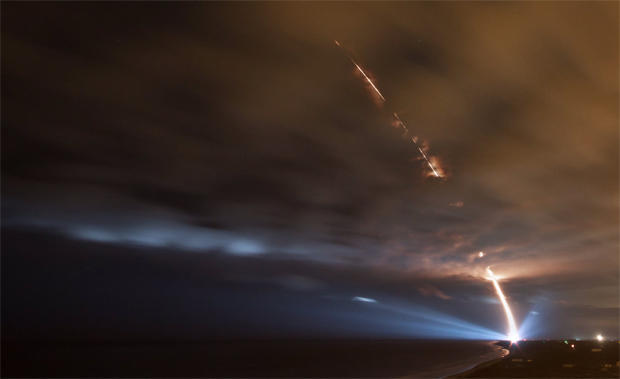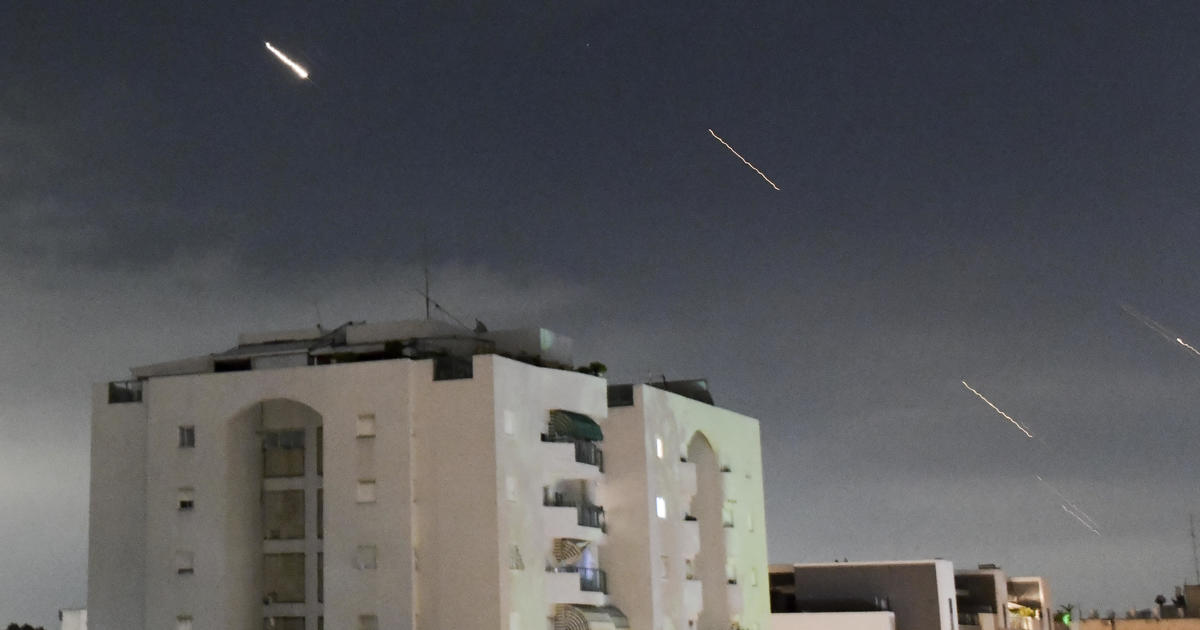Minotaur rocket launches Air Force tracking satellite
Lighting up the overnight sky with a brilliant streak of fire, an Orbital ATK Minotaur 4 rocket, powered by a mix of new motors and decades-old stages from decommissioned ICBMs, blasted a small Air Force satellite into orbit early Saturday to keep tabs on critical high-altitude military and civilian satellites -- and any threats they might face.
Made up of five solid-fuel stages -- including three salvaged from decommissioned Peacekeeper missiles, the eight-story-tall Minotaur 4 roared to life with a burst of fiery exhaust at 2:04 a.m. EDT (GMT-4), briefly turning night into day as it leaped away from pad 46 at the Cape Canaveral Air Force Station.
The first three Peacekeeper stages fired in succession over the next three-and-a-half minutes, putting on a spectacular show as they propelled the rocket out of the lower atmosphere to an altitude of about 120 miles some 328 miles east of the launch site.
After a 10-minute coast, the fourth stage ignited for a one-minute burn, putting the vehicle in a predicted 249-by-372 mile orbit tilted 24.5 degrees to the equator. The rocket's fifth stage fired 10 minutes later to circularize the orbit at 372 miles and to eliminate the tilt, putting the spacecraft on a trajectory directly above the equator.
Twenty-eight minutes after launch, the $49 million ORS-5 satellite, also known as "SensorSat," was released to fly on its own.
Orbital ATK has launched Minotaur rockets in various configurations from California, Alaska and Virginia, but Saturday's flight was the first from Cape Canaveral where the state of Florida makes pad 46 available on a commercial basis for relatively small rockets.
The ORS-5/SensorSat satellite, built by the Massachusetts Institute of Technology's Lincoln Laboratory, is equipped with a single instrument, a telescope designed to monitor satellites in geosynchronous orbit 22,300 miles above the equator.
At that altitude, spacecraft take 24 hours to complete one orbit and thus appear stationary in the sky, making the "geo belt" especially valuable real estate for communications satellites, weather stations, Earth observation spacecraft and a variety of military vehicles.
Managed by the Air Force Operationally Responsive Space office, SensorSat will operate in a much lower orbit, repeatedly scanning the geo belt above to help analysts keep track of current spacecraft and any potential threats, either from adversaries or due to space debris.
The satellite measures just three feet long by about 1.5 feet wide. "It would fit conveniently on somebody's coffee table," said Grant Stokes, a senior manager at MIT's Lincoln Laboratory.
Air Force Col. Shahnaz Punjani, the ORS director, said the spacecraft is built around its telescope much like the A-10 military jet is known for its large 30-mm rotary cannon.
The A-10 is "really a gun with an airplane wrapped around it," she said. "In this case, the ORS-5 satellite is essentially a telescope in low Earth orbit with a spacecraft wrapped around it, looking at the geosynchronous belt."
The telescope will not snap high-resolution pictures of high-altitude satellites. Rather, it will simply monitor their relative positions like blips on a radar screen.
Stokes said SensorSat is "sort of analogous to a surveillance radar at an airport, which goes around and around and around, surveilling the domain."
"We very carefully measure how bright they are, but it does not resolve (spacecraft) in any way," he said. "It's a dot at a distance of something like 40,000 kilometers, a dot on a screen with a very precisely measured position and a very precisely measured brightness."
Geosynchronous orbit is increasingly valuable to military and civilian satellite operators and keeping track of the population, along with potential threats, is a major military objective.
SensorSat is a "gap filler" of sorts. A more powerful satellite, known as SBSS Block 10, is capable of high-resolution imagery and other satellites operating in geosynchronous orbit can be directed to inspect other spacecraft or any perceived threats.
But the SBSS Block 10 satellite was launched in 2010, at a cost of more than $800 million, and it is nearing the end of its design life. A replacement is not expected to fly until the early 2020s.
"The geo belt is particularly important," Stokes said. "There's a huge collection of satellites there, and a tremendous amount of economic value in that special orbit. So it is one that generally we want to keep fairly good tabs on what's there and where things are."





